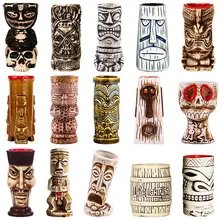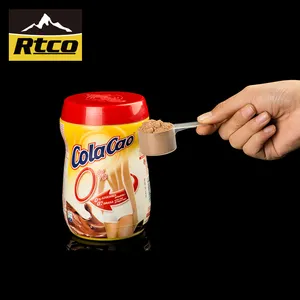The role of the measuring cup is indispensable in a myriad of culinary and scientific contexts, ensuring accuracy and uniformity. This pivotal instrument is employed to gauge the volume of liquid or granular cooking components like flour and sugar with precision. Its use guarantees adherence to recipes with exactitude, a key factor in the culinary venture's triumph.
Varieties and Attributes of Measuring Cups
Diverse in form, measuring cups are tailored to fulfill distinct requirements. A heat-resistant glass beaker measuring cup, for example, is superb for managing hot substances, whereas a long-spouted plastic measuring cup excels in delivering liquids neatly and without spillage. Multi-purpose measuring cups, marked for both liquid and solid volumes, offer versatility in any kitchen or lab. For commercial endeavors like handcrafted soap production, where ingredient precision is paramount, specialized measuring cups are indispensable.
Design and Functionality of Measuring Cups
A measuring cup's design is straightforward yet effective, typically featuring a cylindrical or conical shape with a spout and handle for steady use. Measurement indicators, either etched or printed on the interior, correspond to various volume units. In versatile cups, these indicators may span metric and imperial systems, accommodating global standards and culinary formulas. Their design facilitates effortless filling, clear measurement reading, and accurate dispensing, essential in both gastronomy and scientific research.
Material Selection and Properties
Material choice for measuring cups considers longevity, safety, and environmental impact. PP and ABS are valued for their chemical resistance, light weight, and ergonomic design potential. PS and PE are favored for their transparency and resistance to breakage, crucial for content visibility and user safety. Glass variants, often crafted from high borosilicate, are sought after for their thermal resilience and inert nature, accommodating a broad spectrum of temperatures and ingredients.
Commercial Uses and Applications
Measuring cups find their utility beyond the culinary sphere in commercial settings. Restaurants rely on them for consistent flavor in their offerings. Bakeries depend on them for the exactitude vital to their craft. Hotels provide them for guests preferring self-catering options. Outside the gastronomy industry, measuring cups are instrumental in scientific research labs, chemical manufacturing, and the apportioning of retail bulk goods.
Principal Functions and Additional Features
The primary purpose of a measuring cup is to ascertain ingredient volumes with accuracy. Yet, specialized cups may boast extra features, such as adjustable measurements for adaptability or integrated scales for weighing. Such multifunctionality broadens their applicability in settings where both volume and weight are of essence, like professional patisseries or specialty drink concoction.
Signature Features and Capabilities
Notable characteristics of measuring cups include their thermal resistance, enabling chefs to handle boiling liquids safely, and their calibrated gradations, customizable to industry-specific measurement units. Certain cups also come with non-slip grips and spouts engineered to minimize spills, benefits that are particularly valuable in bustling commercial kitchens or when utilized for educational purposes by youngsters.
Advantages and Favorable Outcomes
Employing a measuring cup enhances the precision of ingredient ratios, leading to greater quality and consistency in culinary preparation. This precision is crucial not only for flavor but also for upholding dietary standards. In scientific and medicinal contexts, the meticulous measurements these cups provide are essential for the correct execution of chemical reactions and the efficacy of pharmaceutical formulations.
Optimal Usage and Operation
To effectively utilize a measuring cup, one should place it on a flat surface and view it at eye level for precise measurement. Dry ingredients should be filled to the brim and leveled with a straight edge, while liquids should be poured to the intended mark without exceeding it. Selecting the appropriate cup type—liquid or dry—is vital for measurement accuracy.
Selecting the Appropriate Measuring Cup
In choosing a measuring cup, consider the ingredients you frequently measure and the extent of your cooking or preparation activities. A heat-resistant glass cup is advisable for high-temperature substances. For voluminous dry ingredients, a larger cup with an ample mouth may prove more convenient. The material should also be selected with consideration for the cleaning agents and storage conditions it will encounter.
Cleaning and Upkeep Recommendations
Cleaning a measuring cup is generally simple, as most are dishwasher safe. Nonetheless, for materials like high borosilicate glass, caution is advised to prevent thermal shock and potential breakage. Regular inspection of the measurement markings is crucial, as they can diminish with time and frequent cleaning.
Incorporation into Commercial Workflows
While measuring cups require no installation, their integration into commercial workflows necessitates educating staff on their proper use and maintenance. Establishing standard protocols for ingredient measurement can aid in sustaining product quality, a critical aspect in businesses such as bakeries and cafés where precision is synonymous with customer contentment.
Intended Audience and Fulfilling Needs
The intended demographic for measuring cups is wide-ranging, including domestic cooks, professional chefs, scientists, and educators. For home use, simplicity and ease of cleaning are often paramount. In professional environments, durability and measurement accuracy take precedence. For educational use, safety and clarity are typically the most significant considerations. By recognizing the diverse needs and preferences of these groups, manufacturers can craft measuring cups that cater to each segment's specific demands.
How does the role of the measuring cup contribute to culinary precision?
The role of the measuring cup lies in its provision of precise measurements, the bedrock of culinary accuracy. Such exactitude is vital for consistency in flavor and texture, particularly in baking where ingredient proportions are crucial. In commercial kitchens, this precision directly influences the uniformity of menu items, impacting customer satisfaction and the establishment's prosperity.
What are the factors to consider when choosing the right measuring cup for your enterprise?
Choosing the right measuring cup entails evaluating the material's robustness, ease of cleansing, and the precision of the measurements. For enterprises, it is also crucial to consider the cup's resistance to commercial cleaning solutions and its durability under frequent usage. The selection may be further influenced by the types of ingredients typically measured and the scale of culinary operations.
How can enterprises effectively integrate measuring cups into their daily routines?
Enterprises can incorporate measuring cups into their daily routines by instructing staff on the importance of precise measurements and embedding them into standard operating procedures. Measuring cups can also aid in inventory control by ensuring accurate portioning, which curtails waste and promotes cost efficiency. Moreover, they can contribute to a business's sustainability efforts through the selection of eco-friendly materials and encouraging their reuse.







































 浙公网安备 33010002000092号
浙公网安备 33010002000092号 浙B2-20120091-4
浙B2-20120091-4